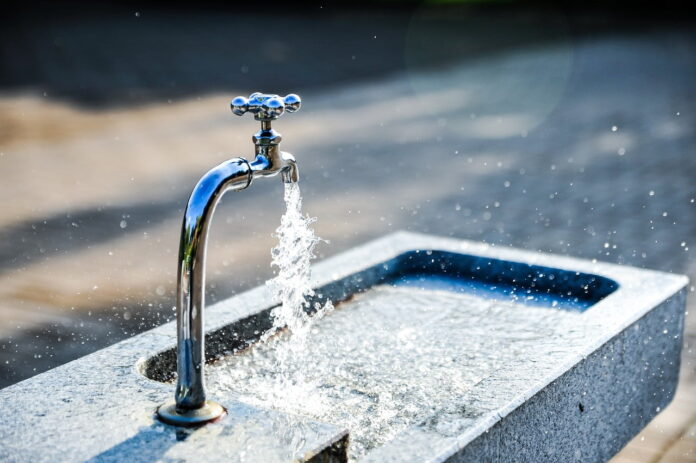Water is essential for life, but it is also a finite resource that we need to use wisely. With the increasing pressures of climate change and population growth, conserving water has never been more crucial. Fortunately, there are numerous simple and effective ways to reduce water consumption in our daily lives, particularly at home where a significant amount of water is used.
Reduce Faucet Flow: Easy Fixes
Reducing the flow from your faucets is one of the quickest and most cost-effective ways to save water. A simple fix is to install aerators, which are small attachments that fit onto the end of faucets. Aerators work by mixing air with the water, reducing the flow while maintaining pressure, giving you the sensation of using the same amount while actually using less. Another easy fix is to repair any leaks. A dripping faucet can waste a surprising amount of water over time – fixing these can save gallons of water each day. Additionally, be mindful of how long you let the water run when washing dishes or brushing your teeth; turning off the tap when it’s not needed can save a significant amount of water.
When considering the bathroom, a low-flow showerhead can be a game-changer. These devices are designed to use less water per minute without compromising on your shower experience. They are easy to install and can reduce water consumption by up to 50%. It’s also wise to pay attention to your toilet. Older models can be real water guzzlers, so consider installing a toilet tank bag or an adjustable toilet flapper to control the amount of water used per flush. For those ready to invest a bit more, low-flow toilets are designed to use just a fraction of the water of traditional toilets and can represent a substantial long-term saving.
Lastly, behavioral changes can also play a significant role in reducing faucet flow. Simple acts like shutting off the water while soaping your hands or using a basin to rinse fruits and vegetables rather than running water can have a cumulative impact. Encouraging family members to adopt these habits can amplify the benefits, making your household more water-efficient and environmentally friendly.
Smart Gardening: Save Water Outdoors
Smart gardening is a fantastic way to conserve water outdoors. Start by choosing plants that are native to your region or are drought-resistant. These plants are adapted to the local climate and soil conditions, meaning they require less water and maintenance. Mulching around your plants is another effective strategy; it helps to retain soil moisture and reduces evaporation, so you won’t need to water as often. When it comes time to water, do it during the early morning or late evening hours when temperatures are cooler, to minimize evaporation losses.
Another aspect of smart gardening is efficient irrigation. Drip irrigation systems target the roots of your plants directly, which reduces water wastage significantly compared to traditional sprinkler systems. Additionally, installing a rain barrel to collect rainwater for your garden can be a cost-effective way of making use of a free resource. This not only conserves tap water but also reduces your water bill. For lawn care, consider reducing the size of your lawn or replacing it with a drought-tolerant ground cover that requires less watering.
Lastly, technology can help manage outdoor water use. Timers and smart irrigation controllers can automate the watering schedule, ensuring that plants receive the right amount of water at the right time. Soil moisture sensors can further optimize watering by signaling when the soil is dry and needs watering, preventing over-irrigation. By integrating these smart gardening practices, you not only conserve water but also promote a healthier and more sustainable garden ecosystem.
Upgrade to Efficient Appliances
Upgrading to water-efficient appliances is a powerful step toward water conservation at home. When it’s time to replace items like washing machines and dishwashers, look for those with the ENERGY STAR label, which indicates they meet energy and water efficiency guidelines set by the U.S. Environmental Protection Agency.
For those looking to make immediate changes without replacing appliances, consider adjusting the settings on your existing machines. Many modern appliances offer eco-modes or water-saving features that can reduce water usage per cycle. It’s also worthwhile to only run these appliances with full loads, as this maximizes efficiency and conserves water. For example, running a dishwasher only when it’s fully loaded can save up to 100 gallons of water per month.
Investing in a hot water recirculation system can also contribute to water savings by providing hot water more quickly. This means less water wasted while waiting for the temperature to rise. In addition, consider installing a water softener if you live in a hard water area. Softened water can improve the efficiency of appliances by preventing scale buildup, which can reduce water flow and heating efficiency. By making these upgrades and adjustments, you not only save water but also potentially reduce your energy bills and extend the lifespan of your appliances.
In the face of global water scarcity, every drop saved at home contributes to the broader efforts of water conservation. By implementing easy fixes to reduce faucet flow, adopting smart gardening techniques, and upgrading to efficient appliances, we can make a significant impact on our water footprint. The steps outlined in this article are not only environmentally responsible but can also lead to substantial savings on water bills. It is our collective responsibility to be water-wise and ensure that this precious resource is preserved for future generations. Let’s embrace these simple yet effective ways to conserve water and make a positive change, starting at home.
